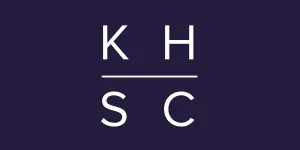
Breaking News: TikTok's Game-Changer Lynx Framework Goes Open Source! Here's What You Need to Know!
2025-03-24
Author: Emily
Breaking News: TikTok's Game-Changer Lynx Framework Goes Open Source! Here's What You Need to Know!
In a bold move that could reshape the app development landscape, ByteDance, the parent company of TikTok, has officially open-sourced Lynx, a groundbreaking framework designed for creating native, cross-platform mobile applications using familiar web technologies like HTML, CSS, and JavaScript.
What is Lynx?
Lynx is not just another framework; it's a comprehensive collection of tools that aim to deliver top-notch native performance. With its custom JavaScript engine and pixel-perfect UI rendering, Lynx is poised to tackle the complexities of developing applications across various platforms and form factors, a challenge that often leads to redundant work and inefficiencies among development teams.
As noted by Lynx architect Xuan Huang, Lynx draws inspiration from established technologies such as Chromium, Flutter, and React Native. Its goal? To provide developers with the ability to build stunning applications without the headache of repetitively recreating the same experience for different platforms—this not only streamlines the development process but also drastically reduces time-to-market.
A Web-Revolution for App Development
Think of Lynx as a unique 'Web for apps,' combining the best of web technologies while implementing a structured approach that includes web-like APIs and intentional design constraints. This innovative framework enables web developers to leverage their existing skills in mobile app development seamlessly.
Furthermore, Lynx supports CSS animations, transitions, variables for theming, and modern visual effects such as gradients, clipping, and masking—all of which contribute to a visually appealing user experience.
Unlocking Lightning-Fast Performance
One significant departure Lynx makes from traditional web frameworks is its introduction of a two-threaded model, in stark contrast to the conventional single-threaded setup. This innovative approach allows for privileged tasks to run on the main thread, while user code executes in the background, leading to a quicker rendering of the initial app frame. Huang emphasizes that this design optimizes the 'time to first frame' (TTFF) metric, enabling highly responsive user interfaces.
What’s Inside the Lynx Toolkit?
Lynx consists of several powerful components, including:
- **Core Engine**: The backbone of the framework
- **ReactLynx**: A React-based frontend for building declarative UIs
- **Rspeedy**: A performance-driven bundler implemented in Rust
- **PrimJS**: An optimized JavaScript engine
- **Lynx DevTool**: An Electron-based debugging tool
The framework also offers a web frontend, allowing Lynx applications to run directly in browsers.
The Future of Lynx
In a recent Syntax FM podcast, ByteDance engineer Zack Jackson referred to Lynx as their bespoke version of React, affirming its role in maintaining a cohesive architecture across diverse applications. However, Huang clarified that Lynx isn't limited to React; further frontends will be made available in future releases.
Lynx is currently utilized in various TikTok applications, including the Search panel and TikTok Studio—an essential tool for content creators. Interestingly, amidst discussions, a Hacker News user identified as a ByteDance employee noted that key parts of the TikTok app are still developed using C++, Kotlin, or Swift; suggesting that while Lynx is pivotal, it shares the stage with traditional coding practices.
A Name with History
You might be wondering about the name Lynx: Huang elaborated on Hacker News that the name originated independently without any foresight. Given its popularity and the dependency of numerous projects on it, ByteDance opted to maintain the name rather than shift gears just because of its open-source nature.
Looking Ahead
Huang reassured developers that more components of Lynx, including additional UI elements and a custom renderer, will be made open-source. Excitingly, there are plans for Lynx to expand its reach beyond mobile apps to desktops, televisions, and even Internet of Things (IoT) devices, broadening the horizon for developers worldwide.
With Lynx now entering the open-source arena, the question remains: how will this powerful framework shape the future of cross-platform application development? Stay tuned!









 Brasil (PT)
Brasil (PT)
 Canada (EN)
Canada (EN)
 Chile (ES)
Chile (ES)
 Česko (CS)
Česko (CS)
 대한민국 (KO)
대한민국 (KO)
 España (ES)
España (ES)
 France (FR)
France (FR)
 Hong Kong (EN)
Hong Kong (EN)
 Italia (IT)
Italia (IT)
 日本 (JA)
日本 (JA)
 Magyarország (HU)
Magyarország (HU)
 Norge (NO)
Norge (NO)
 Polska (PL)
Polska (PL)
 Schweiz (DE)
Schweiz (DE)
 Singapore (EN)
Singapore (EN)
 Sverige (SV)
Sverige (SV)
 Suomi (FI)
Suomi (FI)
 Türkiye (TR)
Türkiye (TR)
 الإمارات العربية المتحدة (AR)
الإمارات العربية المتحدة (AR)